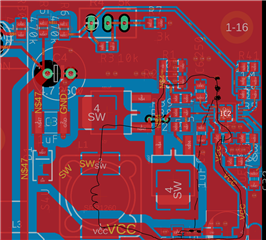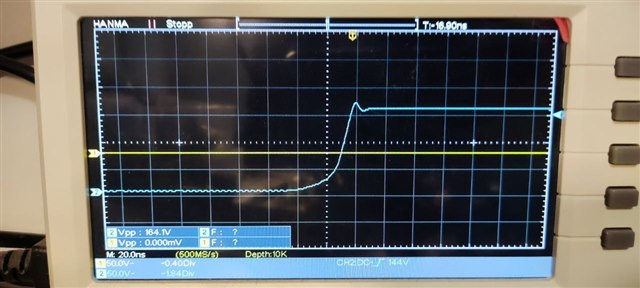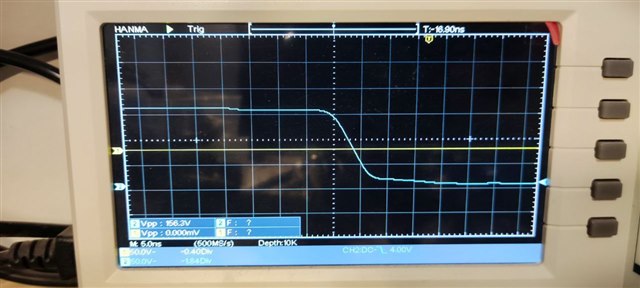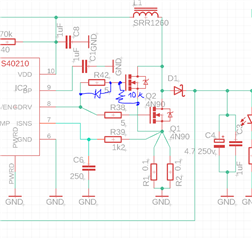Tool/software:
i tryed to creat quick&dirty boost for nixie tubes with TPS40210, use TPS4021x_Boost_Quickstart_Calculator.xlsx for all paramters
This is the shematic: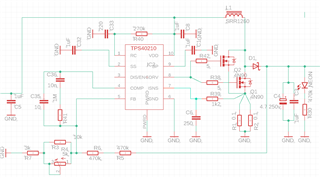
and this is PCB: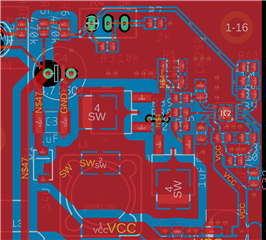
the boos work very well without load, from 12v get only 15ma, output voltage is stable and clean between 100 and 200v with or without load.
but with small load losess rise rapudly, at 2w load it take 3.6W, at 4.5w load - 11W !! i use two mosfets with 500v 0.6A (AOD9N40)
Inductor is 100uH with 8.5a saturage and 4.5A heat current. Inductor is every time cool.
Filter capacitor - 1uF/500v ceramic + 10uF elco
yellow at current sense resistor with 0.05 ohm, get with springs on 
Blue - on MOSFET source with 110v output and 20mA load
with more magnification:
Output voltage is still stable, but losses at MOSFET are very high, what it the problem ?



